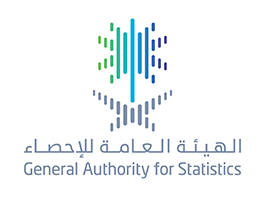Last update 1 / 01 / 2018
The General Authority for Statistics: Stability in the Unemployment Rate of the Saudi Population at (12.8%) and a Decline in the Total Unemployment Rate to Reach (5.8%)

Within the Results of the Labor Market Bulletin for the Third Quarter of 2017
The General Authority for Statistics: Stability in the Unemployment Rate of the Saudi Population at (12.8%) and a Decline in the Total Unemployment Rate to Reach (5.8%)
The General Authority for Statistics (GaStat) published on its official website www.stats.gov.sa the Labor Market Bulletin for the third quarter of 2017, which provides comprehensive data and indicators on the labor market in the Kingdom from the estimates of the labor force survey conducted by the Authority on a quarterly basis, in addition to the labor market data from the administrative records of the relevant entities (Ministry of Labor and Social Development, Ministry of Civil Service, General Organization for Social Insurance, Human Resources Development Fund and National Information Center).
The results of the bulletin for the third quarter of 2017 showed stability in the unemployment rate of the Saudi population at its previous level during the second quarter of 2017, where it stabilized at (12.8%), (7.4%) for males and (32.7%) for females, and a decline in the total unemployment rate (15 years and above) compared to the second quarter of 2017, where it reached (5.8%) in this quarter (3.2%) for males and (21.1%) for females.
The total number of workers from the data of administrative records in the Kingdom of Saudi Arabia reached (13,758,064) indivisuals, the total number of Saudis jobseekrs from the records of administrative reached (1,231,549) individuals, (190,822) are males and (1,040,727) are females. The highest percentage of Saudis jobseekers in the age group (25-29) was represented by 31.3%. Moreover, the results showed that nearly half of the Saudi jobseekers hold Bachelor degrees and their percentages reached (45.8%).
According to the administrative records of the relevant entities, the total number of work visas issued reached 509,180. (22.3%) for the public sector, (37.8%) for the domestic sector and (39.9%) for the private sector.
The bulletin included a large number of detailed data on workers according to the regulations they are subject to, and according to the nationality, gender, age, administrative region and educational level, as well as data on job seekers, average monthly wage, working hours and domestic workers.
On the other hand, the official spokesman of the General Authority for Statistics (GASTAT), Mr.Tayseer Al-Mafarj, clarified that there is a difference between job seekers and unemployed. The "unemployed" according to the Labor Force Survey are the individuals (15 years and above) who were jobless during the period of the time reference (the survey period): the previous week of the household visit and have been looking for a job seriously during the four weeks prior to the household visit (they have at least taken one way to look for a job). This includes those who did not search for work during the four weeks prior to the household visit because they were waiting for a job or starting their own business in the coming period, where they had already been looking for work before the time reference period and at the same time they were able to work and were ready to join it (If available), during the week preceding the household visit.
Additionally, the definition of job seekers is the Saudi individuals (males or females) enrolled in the job search programs of the Ministry of Civil Service (Jdarah or Saed) and the Human Resources Development Fund (Hafiz). And they register their personal data, qualifications, practical experiences and CVs through an electronic system.
It is worth to mention that job seekers in the administrative records are not subject to the internationally recognized standards and conditions of unemployment approved by the ILO and therefore are not considered to be unemployed. Hence, not every job seeker is considered unemployed, he may be looking for work and is working in another job, this is the case in job seekers in government entities who are working, for example, in the private sector.
